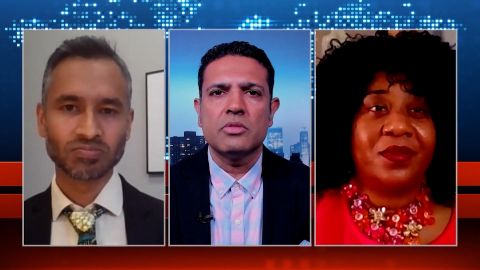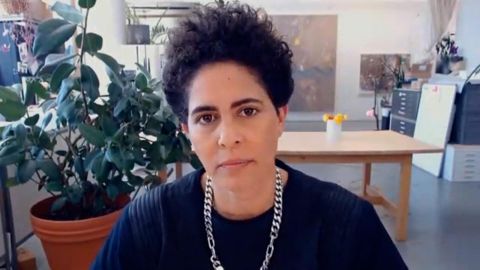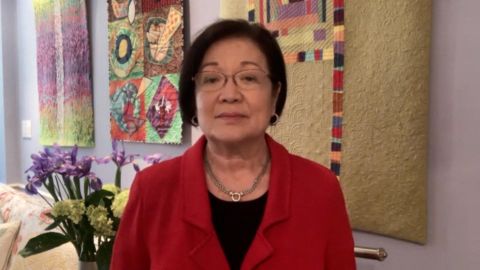Read Transcript EXPAND
CHRISTIANE AMANPOUR: Welcome to the program. Let me just start by asking you, what does this mean to you to have this huge retrospective. Pandemic. Not fully open. You don’t have all the crowds at the museums yet. What does this mean for you?
JULIE MEHRETU, ARTIST: Well, I mean, it’s an immense honor to have the exhibition here at the Whitney, especially because it was this museum that really was formative for me when I first came to New York as a young, very young artist right out of college. And I saw some of the most important shows that were super, like, really instructive to me as an artist growing up, the Black Male show in ’93 or ’94, and the Whitney Biennial in ’93. And so both of those exhibitions were so important to me. To be now in that institution, with such a — with 25 years of work, it’s just an immense honor.
AMANPOUR: So, I was…
MEHRETU: In terms of the pandemic, it’s an interesting time, because we don’t have the tourist audience that you normally have in New York. And you don’t have the numbers of people. We’re at 25 percent capacity in the museum. But there’s this opportunity then to really focus on the local audience. And there’s — and what is the local audience here in Manhattan? What is the local audience here in the greater New York City — greater New York area? And how can we get that audience into the museum? I’m super interested in activating young artists and inspiring and connecting with young artists and aspiring artists throughout all the boroughs here. And that’s really the focus, I think.
AMANPOUR: So, I was fortunate to go to the Whitney and see it, which is really a dramatic experience. It’s just — I mean, it’s such, I mean, I would say, very heavy topics, but it looks so airy and so light in the way it’s hung and the way it looks. And I’m just going to read a couple of the topics that it encompasses. So you do the Syrian war. You do revolution, the Arab Spring, racism, some of the Black Lives Matter, migration, all of that. And when you stand back, you see one thing. And when you move forward, you see completely something different, and everything else gets revealed. Describe to us how you construct those layers upon layers that give you just different views, depending on where you’re standing in perspective to the work.
MEHRETU: Well, part of the interest and the scale of the work is that you have this personal engagement that changes as you have described. When you get closer to the work the entire picture fractures into all these different elements. And you have to travel through a lot of the large-scale work, so almost in a cinematic type of visceral experience. And then when you pull out from the work, you get a very different idea of what that image is. When those images change, that experience changes as you experience the work, which is, I think, parallel to how we try to locate who we are in this world. And for me, these topics are part of the time and space that I’m working in
About This Episode EXPAND
Mazie Hirono; Julie Mehretu; Vivek Maru and Rhonda Hamilton
LEARN MORE


